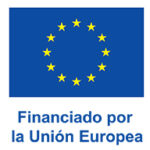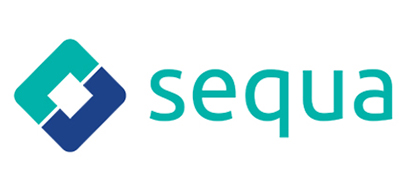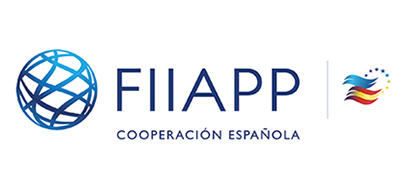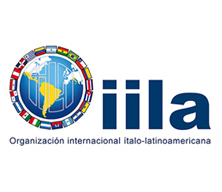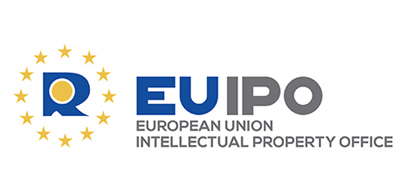Asunción, 05 October 2023. AL-INVEST Verde has analysed the structure of the Paraguayan meat and leather value chain and the traceability systems implemented in the country. The results of this work are collected in the report "The Paraguayan Meat and Leather Value Chain: A Case Study".Environmental traceability as a tool for Paraguayan meat and leather competitiveness"which includes the proposal of a project environmental traceability pilot.
The report is part of the AL-INVEST Verde's technical assistance to the Investment and Export Network (REDIEX) of Paraguay, under the Ministry of Industry and Trade (MIC), to collaborate on the development of a public traceability and certification system for the meat and leather value chain.
Paraguay aspires to have a national strategy for sustainable production that would increase the competitiveness of Paraguayan products in the international marketsas the European one. This strategy would allow the traceability and certification of meat, leather and its derivatives, guarantee good socio-environmental sustainability practices and the absence of deforestation, key aspects for the commercialisation of products with the European Union, in compliance with the so-called "European Union Free Trade Agreement". Deforestation Regulation.
Trade with the EU
The European Union, with 6 % of Paraguay's total trade, represents the country's third largest trading partner, after MERCOSUR (49 %) and China (20 %). Among the products derived from agricultural production, fur and leather have traditionally been the most exported to the EUalthough there has been a decrease in volume in recent years. While in 2014 exports had a total value of 118 million dollars, in 2021 they reached a total value of around 35 million dollars.
AL-INVEST Verde cooperates with Paraguay to promote the transition towards more sustainable production systems, with policy and regulatory frameworks limiting negative environmental externalities generated by increased demand for commodities.
Having norms and standards in the production of raw materials not only favours the care of the environment in the producing countries, but also promotes sustainable, traceable and certified value chains, favours transparency and, therefore, a commercial export strategy in international markets.
Traceability systems in Paraguay
Paraguay currently has two systems for the traceability of livestock: the Regional Office Management Information System (SIGOR) and the Paraguay Traceability System (SITRAP). While SIGOR is compulsory and allows accurate monitoring of the movement of cattle in Paraguay, SITRAP is a voluntary system that guarantees the traceability of individual heads of cattle, which has favoured its acceptance in markets such as the EU.
"However, as it is voluntary, only about 10 % of Paraguayan cattle are registered in the SITRAP system, as many farmers find the system complicated and costly to implement and the financial reward for this effort is generally not considered sufficient," the report states.
From the analysis carried out, it is concluded that there is a need to develop a inclusive, public and free environmental traceability systemThe pilot project proposed by AL-INVEST Verde is therefore aimed at SITRAP-registered establishments. The pilot project proposed by AL-INVEST Verde is therefore aimed at SITRAP-registered establishments and not only responds to the new requirements of international markets, but also aims to be a public policy instrument and a support tool for the private sector.
Diagnosis in Paraguay
Paraguay has approximately 13.5 million cattleThis makes the country an important global player. In terms of livestock ownership, the country is distinguished by a high concentration of cattle in few hands: while 1.79 % of livestock farmers own almost 55 % of livestock, around 60 % own only 5 % of livestock.
By region, the majority of production (54.6 %) takes place in the EASTERN ZONE of the country, known as the Eastern Region. The most important cattle-raising areas are in the north-west of the country (departments of Presidente Hayes, Alto Paraguay and Boquerón) and in the north-east of the eastern region (departments of San Pedro and Concepción).
The export meat processing plants, on the other hand, are mostly located in and around Asunción. There are a total of 12 refrigerators which are classified, according to their capital, into three groups of investments: companies created with Brazilian capital investments (65 % of meat production), companies created with local investments and organised in the form of production cooperatives (25 %) and companies created with Paraguayan capital, but not structured in the cooperative scheme (10 %).
With regard to leather, according to data from the Single Window for Exports (VUE) of the Paraguayan Ministry of Industry and Trade, the annual export of bovine leather in Paraguay in 2021 was estimated at 78,229,000 dollars. This figure implies that leather represents a small proportion of the value of the chain, although it has a strategic role in the country's economy due to the volume of people employed.
In general, the EU has always been the main destination for Paraguayan leather products, with around 18 million dollars. "Specifically, Italy accounts for almost all European imports, with the importance of the Italian market increasing over the last twenty years: while for the period 2002-2017 it accounted for 83 % of European imports, in the period 2016-2021 it reached 97 % of imports," the report details.
About AL-INVEST Verde
AL-INVEST Verde is a European Union (EU) programme whose main objective is to promote sustainable growth and job creation in Latin America by supporting the transition towards a low-carbon, resource-efficient and more circular economy. Through Component 2, led by FIIAPP in consortium with IILA, the programme provides assistance for strengthening public policy and multi-stakeholder dialogues on sustainable agricultural and value chains, environmental and labour standards, as well as sustainable trade and economic policy and regulatory frameworks.
*Photo by Arvid Froese at Unsplash.


